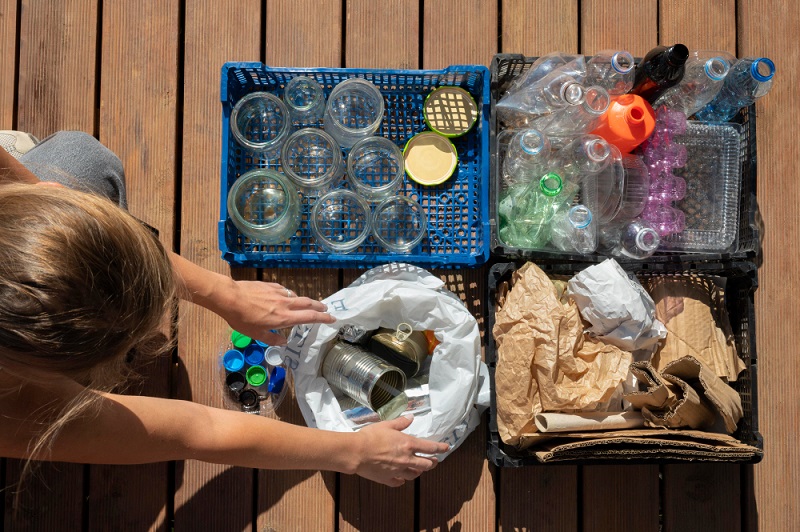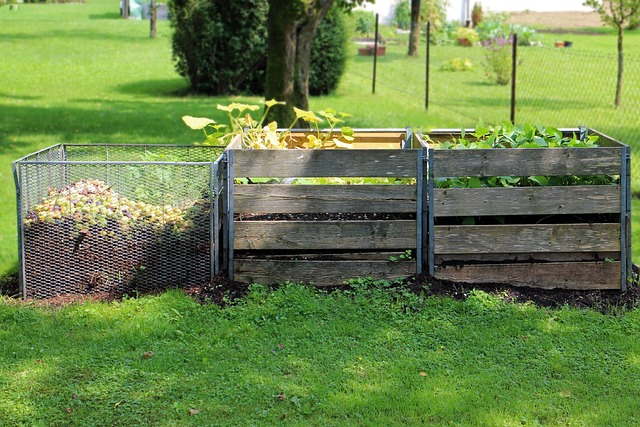Key Takeaways
- Sustaining the environment requires efficient waste management.
- Various strategies can be implemented to reduce waste and promote recycling.
- Utilizing modern waste management technologies can make a significant impact.
Why Waste Management Matters
Keeping the ecosystem healthy requires effective waste management strategies. It involves appropriately handling, treating, and disposing of waste to prevent harmful impacts on human health and the ecosystem. By managing waste efficiently, we can reduce pollution, conserve natural resources, and promote public health. Implementing services like a waste compactor service can significantly aid in this effort by minimizing the volume of waste in landfills.
Proper waste management is crucial for communities to avoid environmental repercussions like increased pollution, health hazards, and harm to animals and plants. A streamlined system safeguards humans and the environment from immediate and long-term damage.
Common Waste Management Strategies
Waste management strategies include waste reduction, recycling, composting, and using landfills for non-recyclable materials. A comprehensive approach combining these methods can significantly reduce landfill waste volume. Strategies include:
Encouraging reusable items and minimal packaging:
Encouraging reusable items and minimal packaging is a sustainable practice aimed at reducing waste, conserving resources, and minimizing environmental impact. It promotes the use of items that can be reused multiple times instead of single-use products and encourages the reduction of excessive packaging materials. Here are some key concepts:
1. Reusable Items
- Examples: Reusable water bottles, shopping bags, containers, straws, coffee cups, etc.
- Benefits: Reduces the need for disposable products, minimizes waste generation, and conserves resources used in manufacturing.
2. Minimal Packaging
- Definition: Using only the necessary amount of packaging to protect and transport a product.
- Examples: Bulk products, items with no or reduced plastic, or products packaged in eco-friendly materials (e.g., recycled or compostable materials).
- Benefits: Reduces plastic and other non-biodegradable waste, lowers carbon emissions associated with production and transportation, and cuts down on landfill overflow.
3. Environmental Impact
- By reducing single-use products and packaging, we can decrease pollution, lower greenhouse gas emissions, and conserve natural resources such as water, energy, and raw materials.
4. Consumer Behavior
- Shift in Demand: Encouraging consumers to opt for products with reusable packaging or minimal waste can create a positive feedback loop, pushing companies to adopt more sustainable practices.
- Lifestyle Changes: Many consumers are now carrying their own reusable bags, containers, and utensils to avoid single-use plastics.
5. Corporate Responsibility
- Examples of Brands: Many companies are moving toward minimal packaging and promoting reusable products, including brands like Lush, which sells packaging-free cosmetics, or stores like Bulk Barn that encourage customers to bring their own containers.
6. Policies and Incentives
- Some regions implement bans on single-use plastics or offer incentives for using reusable items, further encouraging this behavior among consumers and businesses.
Overall, this approach supports the global movement toward sustainability, aiming to reduce waste and promote responsible consumption.
Repurposing materials through recycling programs
Repurposing materials through recycling programs refers to the process of collecting, processing, and transforming waste materials into new, usable products instead of disposing of them. This helps conserve resources, reduce landfill waste, and lower environmental pollution. Recycling programs aim to make the most of materials that have already been used, giving them a new purpose.
Examples of Repurposing Recycled Materials
- Plastic Bottles: Used to create new plastic bottles, clothing (polyester fibers), or construction materials.
- Paper Products: Recycled paper can be used to make new paper products, including office paper, cardboard, or packaging materials.
- Glass: Crushed glass (cullet) can be melted and reformed into new glass containers or used in road construction and other applications.
- Metal Cans: Aluminum and steel cans are often recycled into new cans, reducing the need for mining and refining metals.
Innovative Uses of Recycled Materials
- Upcycling: Some programs or individuals take recycling a step further by turning materials into new products with higher value (e.g., old tires repurposed into playground surfaces or furniture).
- Construction: Recycled materials are increasingly used in construction projects, such as repurposing waste concrete, bricks, or steel into new buildings.
Challenges of Recycling Programs
- Contamination: Recyclables mixed with non-recyclable materials can contaminate entire batches, making recycling less efficient or even impossible.
- Lack of Infrastructure: Some regions may not have adequate recycling facilities, limiting the effectiveness of programs.
- Cost and Market Demand: Recycling programs are often dependent on the market for recycled materials. If demand drops, the cost of recycling may exceed the benefits.
Role of Individuals and Communities
- Participation: The success of recycling programs depends on active participation from individuals and communities, who need to properly sort and dispose of materials.
- Education: Many programs focus on educating the public about what can and cannot be recycled and how to avoid contamination.
Corporate and Governmental Involvement
- Extended Producer Responsibility (EPR): Some companies are required to take responsibility for the entire lifecycle of their products, including recycling or repurposing at the end of the product’s life.
- Legislation and Policies: Governments implement laws that require or incentivize recycling (e.g., bottle deposit schemes, bans on certain single-use plastics).
Examples of Recycling Programs
- Municipal Recycling Programs: Cities often offer curbside collection of recyclables, encouraging households to separate materials like paper, plastic, and glass.
- E-waste Recycling Programs: Special programs exist to recycle electronics, repurposing materials like metals, plastics, and components found in computers, phones, and appliances.
Environmental and Economic Impact
- Recycling contributes to environmental sustainability by conserving natural resources and reducing energy use.
- Economically, recycling creates jobs in collection, processing, and manufacturing industries, contributing to local economies.
In summary, repurposing materials through recycling programs plays a crucial role in the circular economy, helping reduce waste, save energy, and create sustainable products.
Composting organic waste for nutrient-rich soil amendments
Composting organic waste for nutrient-rich soil amendments is a sustainable process that breaks down organic matter, such as food scraps, yard waste, and other biodegradable materials, into humus-like substances called compost. This process enriches the soil, promotes plant growth, and reduces landfill waste. Here’s a breakdown of how composting works and why it’s beneficial:
1. What is Composting?
- Definition: Composting is the natural process of decomposing organic waste through the activity of microorganisms, such as bacteria, fungi, and earthworms, resulting in compost—a dark, crumbly material rich in nutrients.
- Organic Waste for Composting: Includes fruit and vegetable scraps, coffee grounds, eggshells, grass clippings, leaves, and other plant-based materials.
2. How Composting Works
- Decomposition Process: Microorganisms break down the organic materials into smaller particles over time. The process requires oxygen (aerobic decomposition), moisture, heat, and a balance of carbon and nitrogen-rich materials.
- Stages of Composting:
- Initial Breakdown: Microorganisms consume the easily degradable materials, producing heat as a byproduct.
- Active Decomposition: The pile continues to break down, with temperatures reaching 130–160°F (55–70°C), killing pathogens and weed seeds.
- Curing Stage: The compost cools, and materials stabilize into a fine, soil-like texture.
3. Carbon to Nitrogen Ratio (C)
- Carbon-Rich “Browns”: Materials like dried leaves, straw, and wood chips provide carbon, which gives energy to microorganisms.
- Nitrogen-Rich “Greens”: Food scraps, grass clippings, and coffee grounds provide nitrogen, which supports protein synthesis in microorganisms.
- Ideal Ratio: A balance of 30 parts carbon to 1 part nitrogen (30:1) ensures proper composting. Too much nitrogen results in a smelly pile, while too much carbon slows down decomposition.
4. Types of Composting
- Backyard Composting: Using bins or piles at home to compost kitchen and yard waste.
- Vermicomposting: Using worms (typically red wigglers) to break down food scraps in smaller indoor or outdoor setups.
- Industrial Composting: Large-scale operations that process organic waste from municipalities, farms, or industries. These facilities can handle more complex materials like compostable packaging.
- Hot vs. Cold Composting: Hot composting actively maintains higher temperatures for quicker decomposition, while cold composting is slower but requires less maintenance.
5. Benefits of Composting
- Nutrient-Rich Soil Amendment: Compost adds essential nutrients (e.g., nitrogen, phosphorus, potassium) to the soil, improving fertility and plant growth.
- Improves Soil Structure: Compost enhances soil’s water retention, aeration, and drainage, leading to healthier plants and less soil erosion.
- Reduces Waste: Diverts organic materials from landfills, reducing methane emissions, a potent greenhouse gas generated when organic waste decomposes anaerobically (without oxygen) in landfills.
- Sustainable Resource Cycle: Composting returns nutrients to the soil, creating a closed-loop system that reduces the need for chemical fertilizers.
- Carbon Sequestration: Adding compost to soil helps store carbon, reducing atmospheric CO2 levels.
6. Using Compost as Soil Amendment
- Application: Compost can be mixed into garden beds, spread over lawns, or used in potted plants to improve soil structure and provide nutrients.
- Mulching: Compost can also be used as a mulch layer to suppress weeds, retain moisture, and gradually release nutrients into the soil.
- Compost Tea: Some gardeners create compost tea by steeping compost in water and using the nutrient-rich solution to water plants.
7. Materials Suitable for Composting
- Greens (Nitrogen-Rich Materials):
- Fruit and vegetable scraps
- Coffee grounds
- Grass clippings
- Plant trimmings
- Browns (Carbon-Rich Materials):
- Dry leaves
- Paper and cardboard (non-coated)
- Straw and hay
- Sawdust (from untreated wood)
- Other Organic Materials:
- Eggshells
- Tea bags (if they are compostable)
- Shredded newspaper
8. What Not to Compost
- Meat, Dairy, and Bones: These materials can attract pests and produce odors.
- Oils and Greasy Foods: Slows down decomposition and causes unpleasant smells.
- Diseased Plants: Can introduce pathogens into your compost, affecting garden health.
- Invasive Weeds or Seeds: Could regrow if the compost pile doesn’t reach high enough temperatures to kill them.
- Pet Waste: Can carry harmful pathogens.
9. Composting Challenges
- Odor Control: Properly balanced compost piles with good aeration should not smell bad. A smelly pile often indicates excess moisture or a lack of carbon-rich materials.
- Pests: Adding meat, dairy, or greasy foods may attract rodents or other pests. Keep a tight lid on compost bins or avoid these materials altogether.
- Time and Effort: Composting requires time, with active piles decomposing within a few months, while passive piles may take a year or more. Turning the compost pile regularly speeds up the process.
10. Examples of Composting Programs
- Community Composting: Some municipalities offer compost collection services or set up community composting hubs where residents can drop off food scraps.
- Farm and Agricultural Composting: Farms often compost crop residues, manure, and food processing waste to create nutrient-rich amendments for their soil.
11. Environmental Impact
- Landfill Reduction: Composting reduces the amount of organic waste sent to landfills, lowering landfill emissions and conserving landfill space.
- Methane Reduction: Organic materials decomposing anaerobically in landfills produce methane, a potent greenhouse gas. Composting helps reduce methane production by allowing organic waste to decompose aerobically (with oxygen).
- Soil Health and Biodiversity: Compost promotes soil biodiversity by encouraging the growth of beneficial microbes, fungi, and insects.
12. How to Start Composting at Home
- Choose a Bin or Compost Pile: You can buy a compost bin or create a simple pile in your backyard.
- Layer Materials: Start with a layer of browns (carbon-rich) at the bottom, then alternate between greens (nitrogen-rich) and browns.
- Maintain Moisture and Aeration: Keep the compost pile moist but not too wet. Turn it regularly to add oxygen, speeding up decomposition.
13. Economic and Social Benefits
- Cost Savings: Reduces the need to buy commercial fertilizers and lowers waste disposal costs.
- Community Engagement: Composting programs promote environmental stewardship and community participation in waste reduction efforts.
In summary, composting organic waste transforms materials that would otherwise go to landfills into nutrient-rich compost that improves soil health, supports plant growth, and closes the loop on organic waste management. It is an essential component of sustainable agriculture and waste reduction practices.
Strategically using sanitary landfills for non-recyclable waste containment
Strategically using sanitary landfills for non-recyclable waste containment involves carefully managing and designing landfills to minimize environmental impact while safely disposing of waste that cannot be recycled or composted. Sanitary landfills are engineered with protective liners, drainage systems, and daily covering of waste to prevent contamination of soil, groundwater, and air. By controlling leachate (liquid produced by waste decomposition) and capturing methane gas emissions, these landfills reduce pollution and lower greenhouse gas contributions. The strategic use of landfills also includes site selection and monitoring, ensuring waste is securely contained in locations with minimal environmental risk, while maximizing the potential for energy recovery through waste-to-energy technologies. This approach is crucial for managing residual waste in a sustainable waste management system.
Cooperation among individuals, businesses, and government agencies is essential for a well-functioning system.
Importance of Recycling and Reuse
Recycling and reuse are crucial for sustainable waste management, as they reduce the need for raw materials and energy used in production. Reusing items minimizes waste generation and promotes resource conservation. Recycling also prevents greenhouse gas emissions and water pollutants. Organizations and communities are implementing zero-waste initiatives to encourage the circular economy and remove garbage from landfills. Supporting these initiatives can reduce our ecological footprint and create a more sustainable future. Individuals can participate by making conscious purchasing decisions and opting for products with less packaging or recyclable materials.
Role of Waste Compactors in Waste Management
Waste compactors lower the amount generated by compressing garbage into smaller, more manageable pieces. This process not only saves space but also makes waste transportation more efficient. Compactors are widely used in residential, commercial, and industrial settings to manage waste more effectively.
By significantly reducing waste volume, compactors help lower waste collection frequency, thereby cutting down on transportation costs and fuel consumption. This makes waste management more cost-effective and reduces the carbon footprint associated with waste hauling. Furthermore, compactors minimize the risk of environmental hazards related to overflowing waste bins, contributing to cleaner and safer communities.
Innovative Technologies in Waste Management
Modern technologies like intelligent waste bins, automated waste sorting systems, and waste-to-energy plants are revolutionizing waste management by optimizing collection, enhancing recycling rates, and generating renewable energy. Smart bins with sensors alert management when they’re nearly complete, reducing overflow issues. Automated waste sorting systems efficiently separate recyclables from non-recyclables, increasing recycling rates and reducing contamination. Waste-to-energy plants convert non-recyclable waste into energy, reducing reliance on fossil fuels and promoting sustainable waste handling.
Community Efforts to Promote Sustainable Waste Management
Community involvement is critical to successful waste management. Initiatives like neighborhood clean-up drives, public awareness campaigns, and local recycling programs can engage residents in sustainable practices. Education and participation are vital to fostering a culture of environmental responsibility. As noted in a UN report, community-led actions are essential for achieving sustainable development goals.
Communities can promote waste management through events and workshops, with local governments providing resources and infrastructure. Schools and youth organizations can also participate, instilling sustainable habits from a young age and guaranteeing the environment’s and the community’s long-term advantages.
Benefits of Effective Waste Management to the Environment
Waste management is crucial to environmental stewardship, decreasing pollution, protecting the environment, and lessening the effects of climate change. It helps conserve resources by promoting recycling and reuse of materials. Organic waste, diverted through composting, significantly reduces methane emissions. Recycling materials like aluminum, glass, and paper saves energy, reducing carbon dioxide emissions. Effective waste management is essential for protecting ecosystems and ensuring a sustainable future for all.







